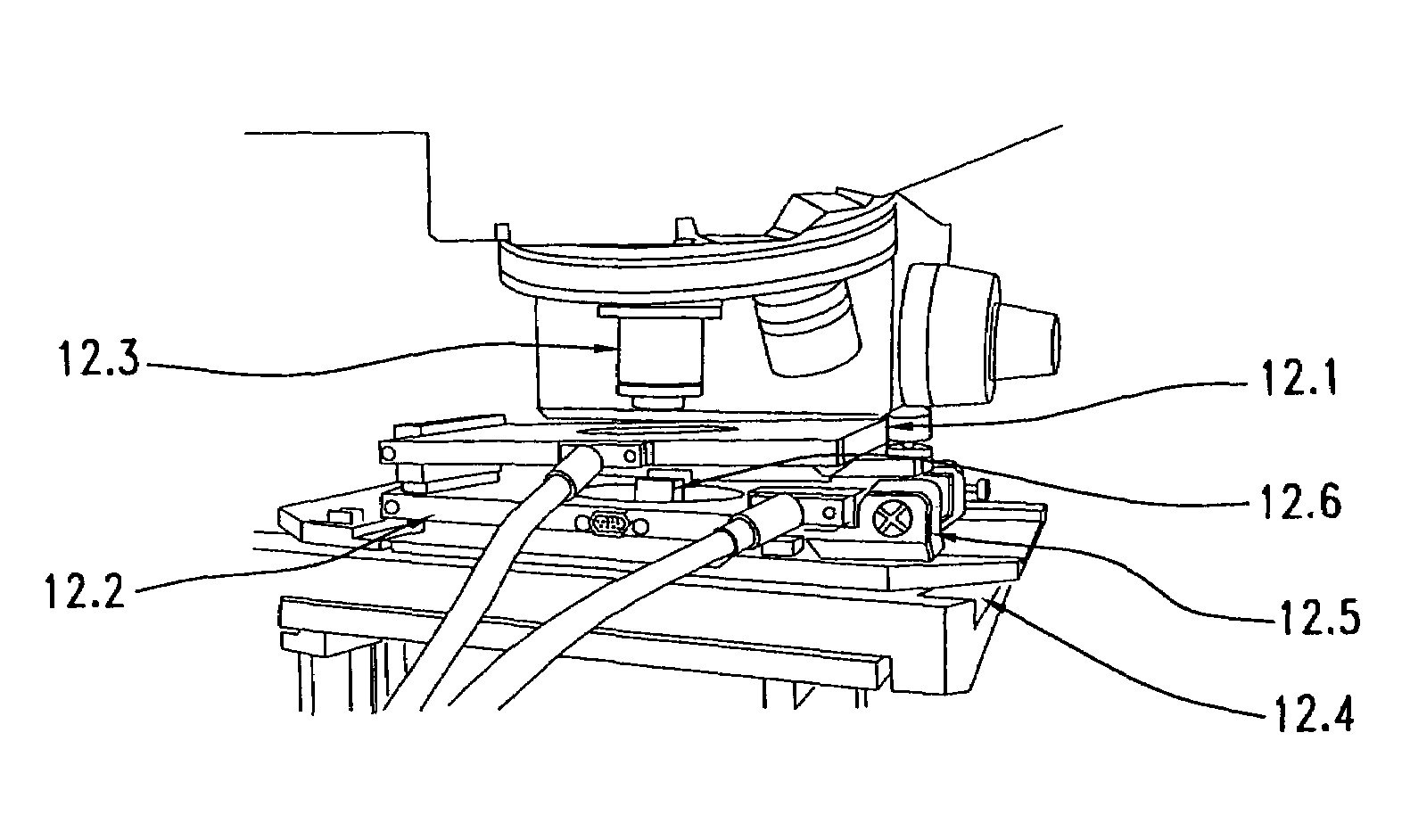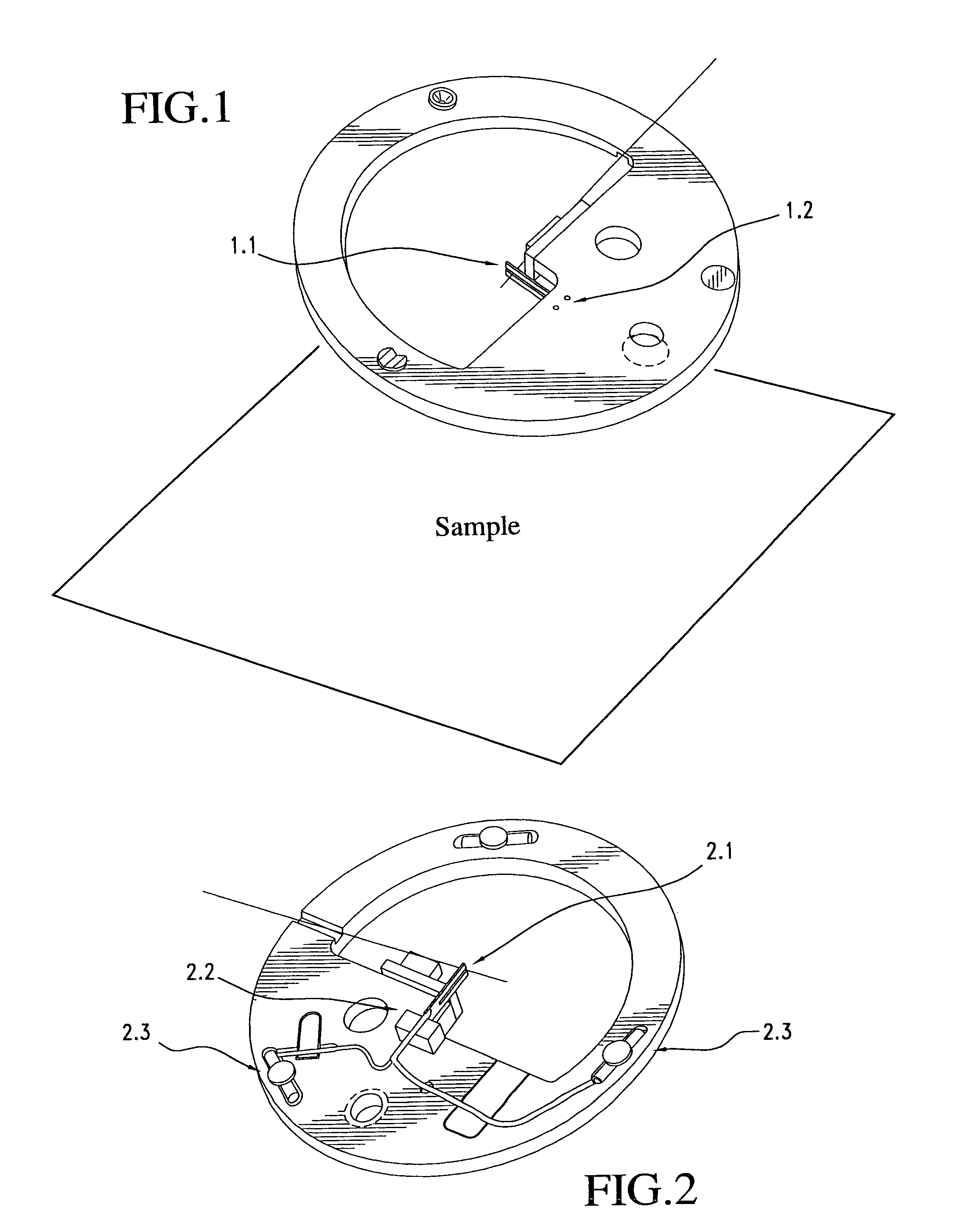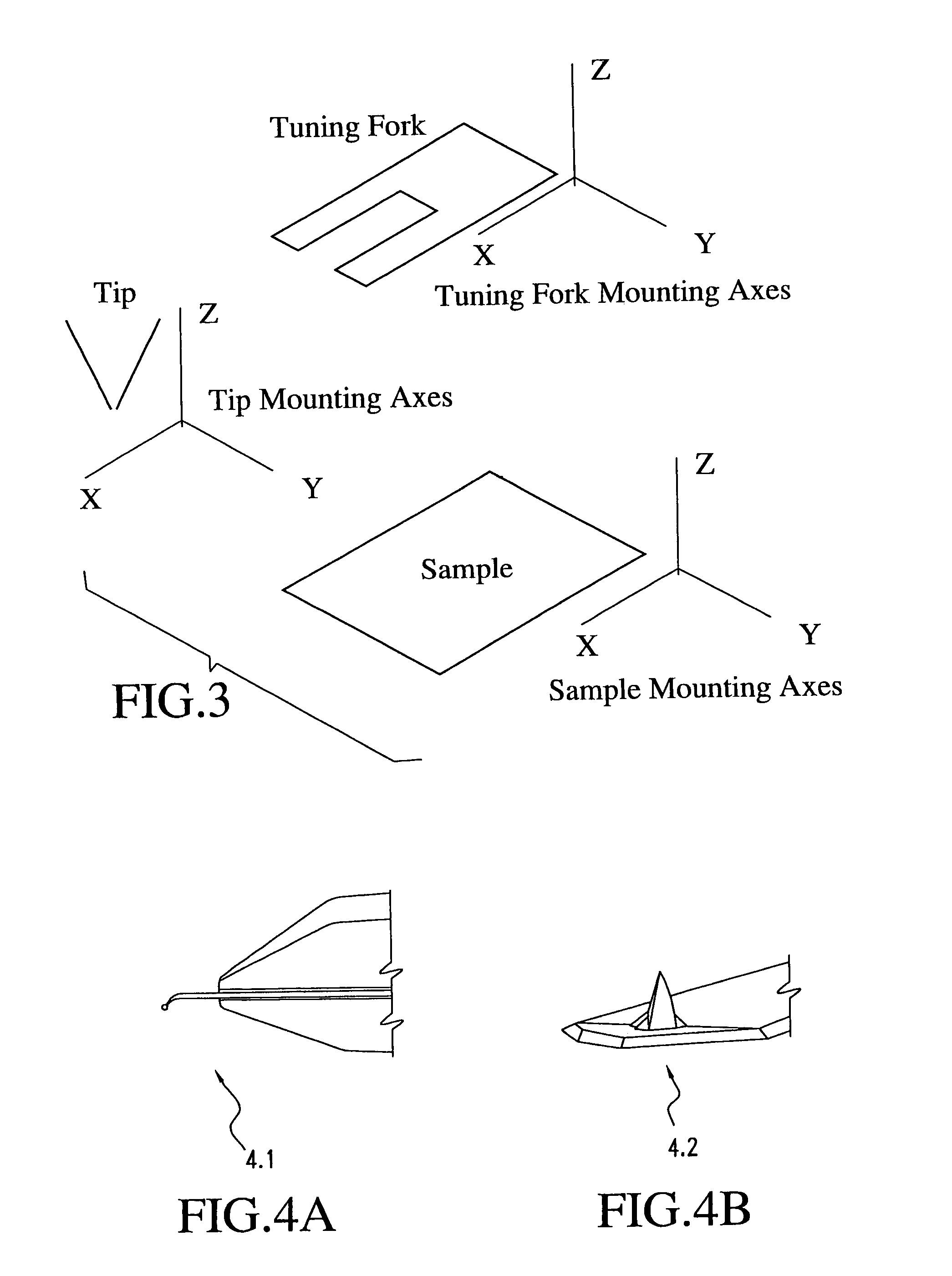Multiple plate tip or sample scanning reconfigurable scanned probe microscope with transparent interfacing of far-field optical microscopes
a probe microscope and multi-plate tip technology, applied in the direction of mechanical measuring arrangement, mechanical roughness/irregularity measurement, instruments, etc., can solve the problems of limited patent application, affecting the characteristics of tuning forks, and very limited invention of karrai and hines
- Summary
- Abstract
- Description
- Claims
- Application Information
AI Technical Summary
Benefits of technology
Problems solved by technology
Method used
Image
Examples
Embodiment Construction
1. Tuning Fork Feedback
[0047]In one preferred method of the invention, illustrated in FIGS. 1 and 2, a tuning fork (1.1 and 2.1) is mounted on a fork holder (2.2). The mounting of the tuning fork on the fork holder can be in one of several directions. The tuning fork can be used as has been shown in FIGS. 1 and 2, or can be placed, in accordance with the invention, in any relative orientation to the sample. In FIG. 3 the tuning fork is diagrammatically shown with three imposed axes. Sample and tip axes are also indicated. The tuning fork can be placed with the z axis parallel to the sample z axis or any other of the tuning fork axes can be placed parallel to the sample z axis; other orientations are also possible. The oscillation of the tuning fork is along the y axis of the tuning fork
[0048]Also shown in FIG. 3 is a SPM tip relative to its own set of axes. The tip can be associated with either a straight fiber or a cantilevered fiber (4.1), as illustrated in FIG. 4A, or with a sili...
PUM
| Property | Measurement | Unit |
|---|---|---|
| optical axis | aaaaa | aaaaa |
| scanned probe microscopy | aaaaa | aaaaa |
| confocal optical microscope | aaaaa | aaaaa |
Abstract
Description
Claims
Application Information
 Login to View More
Login to View More - R&D
- Intellectual Property
- Life Sciences
- Materials
- Tech Scout
- Unparalleled Data Quality
- Higher Quality Content
- 60% Fewer Hallucinations
Browse by: Latest US Patents, China's latest patents, Technical Efficacy Thesaurus, Application Domain, Technology Topic, Popular Technical Reports.
© 2025 PatSnap. All rights reserved.Legal|Privacy policy|Modern Slavery Act Transparency Statement|Sitemap|About US| Contact US: help@patsnap.com



